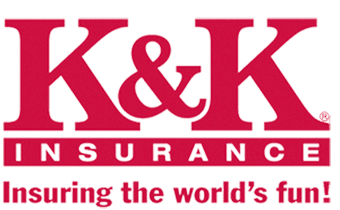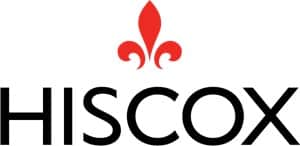Gym insurance can be a single policy or a combination of policies that protect your business from customer injuries, subsequent lawsuits, or damage to your equipment. General liability and a business owner’s policy (BOP) are the two most common coverages gym owners need. While costs can vary, general liability for a gym ranges from approximately $200 to $4,900 a year.
Since a gym or health club may require many different policies, seeking a professional to help determine your business’ coverage needs makes sense. Next Insurance, our top recommendation for gym insurance, is a great provider of gym, personal trainer, and fitness instructor insurance. Its quote system is simple and intuitive and provides custom coverage for your specific business needs. Get a free quote in minutes.
Visit Next Insurance for a quote
Gym Insurance Costs
Because of the nature of the business, gym insurance carries a higher level of risk than other types of businesses, so the premium is typically higher. We received sample quotes for small facilities: around 2,500 square feet and revenue of less than $500,000 annually. The total insurance cost can still be more than $10,000 annually.
Gym Insurance Costs & Deductibles by Policy
Policy | Annual Premium Cost | Deductible |
|---|---|---|
General Liability | $200–$4,900 | $0 |
Commercial Property | $550–$2,700 | $500–$1,000 |
BOP | $400–$9,500 | $500–$1,000 |
Professional Liability | $450–$2,000 | $500–$1,000 |
Note that the cost of workers’ compensation insurance is calculated using a formula that includes your business’ industry, claims history, and number of employees. The price can vary significantly even within the same industry.
Multiple factors affect gym insurance costs. When applying, be prepared to answer questions about the gym’s square footage, the number of employees, and whether you hire minors or let minors work out. Other questions may include your hours of operation and if you offer massage therapy. Insurance companies may also ask, or even require, members to sign a general waiver.
Keep in mind that many insurers have either excluded the following activities from coverage or will charge significantly more for them:
- Training minors
- Giving nutrition or diet advice
- Hosting fitness competitions
- Selling private label supplements
- Teaching martial arts
Types of Gym Insurance Coverage
Coverage | Description | Best For |
|---|---|---|
BOP | Combination of general liability and commercial property; sometimes includes lost business income coverage |
|
General Liability | Liability coverage for third-party losses involving bodily injury, property damage, and personal and reputational harm |
|
Professional Liability | Liability coverage for claims a service provided caused harm or financial loss |
|
Inland Marine | First-party property insurance for tools and equipment |
|
Workers’ Compensation | Medical bills and wage replacement for employees who were injured or became ill as a result of their job |
|
A BOP is a combination of two coverages: commercial property and general liability. Most likely, whatever provider that you work with will also include lost business income coverage. BOP coverage is essential for boutique clubs, health clubs, and any business owner who owns the building and the gym.
General liability insurance is the most common and essential type of liability policy because the losses covered are so broad—it protects your business from third-party claims of injury and property damage. If someone slips and falls at your 24/7 key access facility, you could file a claim under this coverage for their injury. Note that this policy is unnecessary if you purchase a BOP.
Business owners in fitness instruction or related businesses need to consider purchasing general liability insurance.
This insurance is sometimes referred to as errors and omissions (E&O) insurance. This is a liability policy for any service industry because it protects your business from claims that a service provided resulted in harm or loss to the customer. Consider carrying this policy if your gym has fitness, Pilates, dance, or any other type of instructor.
Did You Know? Even virtual trainers need to consider insurance. When teaching online classes, you could be held liable if your instruction for a specific exercise is incorrect and ends up injuring a client. For a virtual instructor, the most important coverage to consider is professional liability.
If you do mobile instruction, say at a park, or rent a facility but own the equipment, then you’ll want inland marine insurance to cover your tools and equipment. This is a first-party property insurance in which the coverage follows the listed items instead of being tied to a specific location. Providers will usually offer this coverage either as a standalone policy or as an endorsement for general liability insurance.
In nearly every state, workers’ compensation is a required coverage. If an employee becomes injured or ill from their job, it helps with medical costs and wage replacement and, in some states, also protects the employer from liability. Any type of gym that has at least one employee should check state guidelines to determine if this coverage is required.
Gym Insurance Examples
Gym insurance can help your business navigate a multitude of extremely common losses:
- During a high-intensity interval training (HIIT) class, a participant slips and falls on the hard floor, breaking a bone. This type of loss would fall under general liability insurance.
- Your gym offers early-morning yoga classes. The instructor is moving quickly between positions and one of the new attendees is unfamiliar with the forms and pulls a muscle due to poor instruction. This type of loss is why professional liability insurance is important.
- One of your trainers is acting as a spotter for a member using a particularly heavy set of weights. The weightlifter’s grip slips. Thankfully, your employee catches the weight but, in the process, tears a muscle in their back. Workers’ compensation insurance will help cover medical expenses related to your trainer’s work-related injury.
- You come in early Monday morning to open the gym and discover someone broke the front window and stole quite a bit of expensive equipment. Fortunately, you purchased a BOP for your business and have coverage for the damage to the building and the contents of your business.
6 Best Gym Insurance Providers
- Next Insurance: Best for gym owners
- Simply Business: Best for comparing quotes from top providers
- The Hartford: Best for fitness coaches and personal trainers
- Insurance Canopy: Best for affordable and quick insurance
- Hiscox: Best for CrossFit trainers
- K&K Insurance Corporation: Best for 24-hour clubs
Quote Process | Accessibility | Instant Certificate of Insurance (COI) | Financial Rating | |
|---|---|---|---|---|
Online | Monday to Friday, 6 a.m. to 6 p.m. Pacific time | ✓ | A- (Excellent) | |
Online | Monday to Friday, 8 a.m. to 8 p.m. Eastern time | ✓ | A++ (Superior) | |
Online | 24/7 call center | ✓ | A+ (Superior) | |
 | Online | Monday to Friday, 8 a.m. to 8 p.m. Mountain time | ✓ | A+ (Superior) |
 | Online | Monday to Friday, 7 a.m. to 10 p.m. ET | ✓ | A (Excellent) |
 | Create an account to begin the process or call an agent | Monday to Saturday, 7 a.m. to 7 p.m. Central time | ✓ | A (Excellent) |
Next Insurance: Best for Gym Owners

Next Insurance, in partnership with the National Academy of Sports Medicine (NASM), is the best provider for gym owners. This is because it can offer all of the different types of insurance you may need: general and professional liability, workers’ compensation, and commercial property insurance.
It also offers savings of up to 10% when you bundle multiple coverages. Next Insurance is best for gym owners with standard operating hours because it provides high liability and property limits. Despite being less than a decade old, AM Best rated Next Insurance an A- (Excellent).
You can learn more about the provider in our review of Next Insurance.
Get a quote from Next Insurance
Simply Business: Best for Comparing Quotes From Top Providers

Digital insurance brokerage Simply Business specializes in providing online insurance options from over 15 top providers, without the need to speak to anyone. The broker’s emphasis is on smaller businesses.
After entering key information about your business, Simply Business will provide multiple quotes with information on the coverage and provider, giving you the freedom to pick the right coverage. You can also purchase coverage and then manage your policy online after becoming a customer.
Simply Business works with top-rated carriers. For the quotes we received, the carriers were NASW, with an AM Best rating of A- (Excellent), and Hiscox, which AM Best rated an A (Excellent). Also, Simply Business is owned by Travelers, and Travelers’ AM Best rating is A++ (Superior).
You can learn more about the broker through our review of Simply Business.
Get a quote from Simply Business
The Hartford: Best for Fitness Coaches & Personal Trainers

For gyms that employ fitness instructors or fitness professionals working as independent contractors, The Hartford is the best provider. It offers a professional liability policy specifically for fitness professionals. This policy helps you if, for example, you instruct someone how to lift incorrectly and they are injured.
An established carrier with over 200 years of experience, The Hartford’s AM Best rating is A+ (Superior). Our review of The Hartford dives deeply into its coverages and services and can help you decide if the provider fits the bill.
Insurance Canopy: Best for Affordable & Quick Insurance

Insurance Canopy offers policies for personal, yoga, dance, Pilates, CrossFit, Zumba, and other instructors. It also has insurance for dietitians and nutritionists. It provides a standard policy for these fitness jobs that starts at $12.50 a month. If you purchase an annual plan, you’ll save 14%, which brings the policy to $129.
These low prices make it the most affordable provider for gym insurance—and the ease of purchasing a policy in just minutes makes it the fastest way to get gym insurance too. However, Insurance Canopy does not have any mobile application to create and share COIs, and if you want to change your policy by adding additional insureds, that will cost $30.
The policy is administered through the Great American Insurance Group (GAIG). AM Best rated GAIG an A+ (Superior).
Note that while Insurance Canopy and Hiscox both offer insurance for CrossFit trainers, the main difference between the two is how each provider structures its policies. Insurance Canopy offers preselected policies that focus primarily on liability and equipment coverage, whereas Hiscox has a larger range of available options, like workers’ comp, to choose from. Both are solid options—it just depends on your particular business needs.
Get a quote from Insurance Canopy
Hiscox: Best for CrossFit Instructors

Hiscox is an insurer that only insures small businesses. Its core customer base is microbusinesses with one to three employees. It is a great option for CrossFit instructors because a key coverage for this industry is professional liability—and Hiscox offers a great professional liability policy.
Its policy includes multiple coverage enhancement options like subpoena assistance and defense proceedings outside of the policy limits. Its definition of personal injury is expanded to include personal and advertising injury, a bonus for professional liability since that is usually a general liability coverage.
While a relatively newer provider, Hiscox has its roots in a brokerage that goes back nearly 100 years. Hiscox’s AM Best rating is A (Excellent). We cover its policies, policyholder services, and more in our review of Hiscox.
K&K Insurance Corporation: Best for 24-hour Clubs

Being open 24 hours is a type of risk many providers do not wish to insure. However, K&K Insurance Corporation will cover facilities that have controlled access to a gym open all day and night; thus, it is the best provider for a 24-hour club.
K&K Insurance is owned by Aon, and AM Best rated Aon A (Excellent).
Get a quote from K&K Insurance
Frequently Asked Questions (FAQs)
Gym insurance is a policy or combination of policies purchased to protect a gym from the financial loss of claims. For a gym club owner, the best policy is a BOP, closely followed by workers’ compensation for employees. Personal trainers or fitness instructors will want to consider professional liability.
General liability for a gym can range from $200 to $4,900 annually. Gyms occupy a potentially risky space, especially ones that are open 24/7, employ dieticians, or host fitness competitions. These risks, coupled with the expensive property and equipment, can lead to a premium being over $10,000 annually.
No. While a business liability waiver can help protect your business from lawsuits, it isn’t a magic shield that covers every scenario. It must be in compliance with state laws and regulations and, depending on the activity or loss, doesn’t mean the injured party cannot still pursue litigation against your business.
You can get gym insurance by contacting an agent or insurance company directly to get a quote and purchase a policy. You can also go with a broker, which works with multiple providers. The advantage of working with a broker is they can give you options from different providers, letting you compare coverage and pricing.
Bottom Line
It’s easy to sweat the small stuff, but with the right policy, you won’t need to worry about your business. Whether you own a 24/7 fitness club or work as a personal trainer, gym insurance is a key part of a successful business. It protects you against claims of negligence and provides coverage for your equipment and building.
Next Insurance can help you protect your gym and your livelihood with quality coverage that is customized to fit your needs. Get a quote and purchase a policy in minutes.
Visit Next Insurance for a quote
User review reference:
[1]Trustpilot | Simply Business